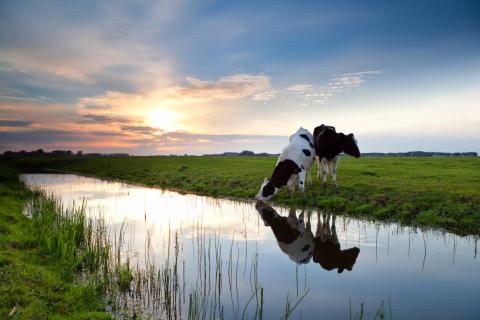Abstract
In the context of ever-growing demand for food and associated concerns regarding the environmental impacts of high-input agricultural systems, there is growing interest in mixed farm enterprises to deliver greater sustainability compared with mono-enterprise production systems. However, assessments of such systems are complex and require high-resolution data to determine the true value and interconnectivity across enterprises. Given the scarcity of information on mixed crop–livestock systems and the difficulties of its analysis, we perform life cycle assessment using temporally high-resolution data (2019–2022) from a long-term experiment in South America to evaluate the ‘cradle-to-farmgate exit’ greenhouse gas emissions intensities of four rotational crop–livestock systems. Systems evaluated were continuous cropping: 2 years of continuous cropping; short rotation: 2-year continuous cropping plus 2-year pasture; long rotation: 2-year continuous cropping followed by 4-year pasture; and forage rotation: continuous pasture. Emissions intensities for beef throughput were reported as kilograms of carbon dioxide equivalents (CO2-eq) per kilogram of liveweight gain (LWG) using the Intergovernmental Panel for Climate Change’s Sixth Assessment Report (AR6 2021) CO2 characterisation factors. Point estimate results were found to be 11.3, 11.8, 11.8 and 16.4 kg CO2-eq/kg/LWG for continuous cropping, short rotation, long rotation and forage rotation, respectively. Emission averages arising from crops, which were separated from animal-based emissions using economic allocation, were 1.23, 0.53 and 0.52 kg CO2-eq/kg for soybean, wheat and oat, respectively. The inclusion of soil organic carbon stock changes had notable effects on reducing each system’s emissions: by 22.4%, 19.2%, 25.3% and 42.1% under continuous cropping, short rotation, long rotation and forage rotation, respectively, when soil organic carbon was included. Given there are few life cycle assessment studies available on such mixed-enterprise ‘semi-circular’ systems, particularly with novel primary data, this study adds critical knowledge to agri-food-related sustainability literature by addressing environmental issues in complex production systems compared to extant and broad coverage of mono-enterprise systems.
Pereyra-Goday, F., Jebari, A., Takahashi, T. et al. Carbon footprint of mixed farming crop-livestock rotational-based grazing beef systems using long term experimental data. Agron. Sustain. Dev. 44, 41 (2024). https://doi.org/10.1007/s13593-024-00977-1
Access the full article below or by following the doi.



Discussion
Perhaps another example of where the footprint per unit of food energy and food protein output would have made understanding easier. It is also worth noting that the soil carbon changes are finite and eventually cease.